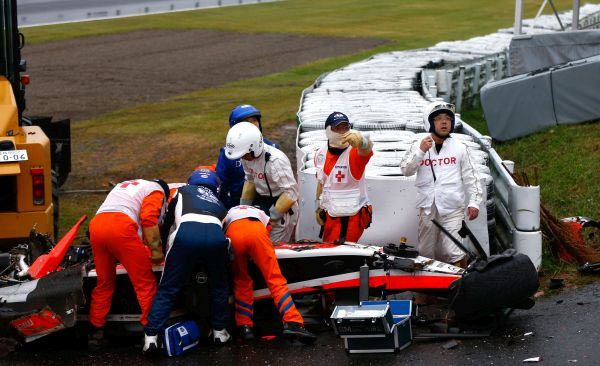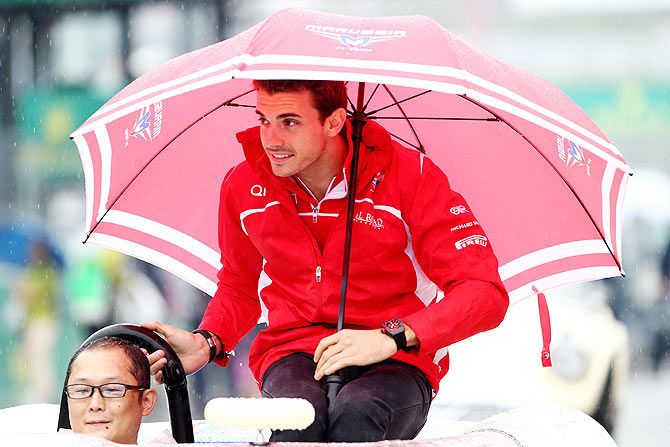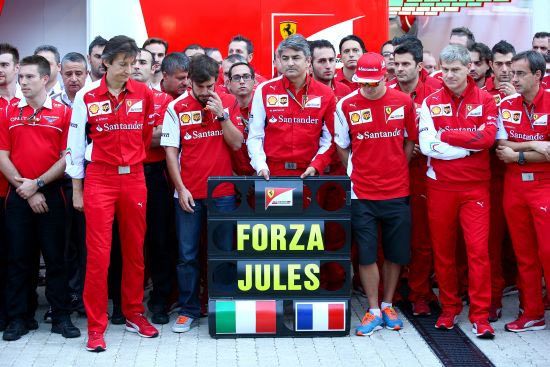An FIA report found that Marussia driver Bianchi over-controlled the oversteering car, such that he left the track earlier than Sutil, and headed towards a point 'up-stream' along the barrier.

French Formula One driver Jules Bianchi did not slow sufficiently under warning flags before crashing at the Japanese Grand Prix, an International Automobile Federation (FIA) report found on Wednesday.
"Bianchi did not slow sufficiently to avoid losing control at the same point on the track as (Adrian) Sutil," concluded the 396-page report, a summary of which was released on the FIA's website (www.fia.com).
Bianchi suffered the most serious F1 race injury since the death of Ayrton Senna in 1994 when he hit a recovery tractor in a wet Japanese Grand Prix on October 5.
The Marussia driver, whose team missed the last three races of the year and has since folded, remains unconscious and in a critical condition in hospital in southern France after being flown home last month.
The report found that Bianchi's car hit the crane at 126 kph and said medical services were not at fault in their handling of the aftermath.
"All rescue and medical procedures were followed, and their expediency are considered to have contributed significantly to the saving of Bianchi’s life," the report said.

In October, Marussia said they were 'shocked and angered' by media reports suggesting that Bianchi had not slowed down enough under caution flags.
"If drivers adhere to the requirements of double yellow flags...then neither competitors nor officials should be put in immediate or physical danger," the report added.
"Bianchi over-controlled the oversteering car, such that he left the track earlier than Sutil, and headed towards a point 'up-stream' along the barrier.
"Unfortunately, the mobile crane was in front of this part of the barrier, and he struck and under-ran the rear of it at high speed along the barrier."
The report found that neither a closed cockpit on the car, nor the fitting of a skirt around the crane, would have protected Bianchi from serious injury.
"There is simply insufficient impact structure on an F1 car to absorb the energy of such an impact without either destroying the driver’s survival cell, or generating non-survivable decelerations," it said.

"It is considered fundamentally wrong to try and make an impact between a racing car and a large and heavy vehicle survivable. It is imperative to prevent a car ever hitting the crane and/or the marshals working near it."
The FIA report recommended a speed limit being imposed in any section of track where double yellow warning flags are being displayed.
Other measures included improved circuit drainage and a recommendation that the calendar be reviewed to avoid holding races during local rainy seasons.











